This Famous Writer Explored Southern Australia — Here's How I Retraced His Steps
John Muir, father of America’s national parks, visited the hills of South Australia more than a century ago.
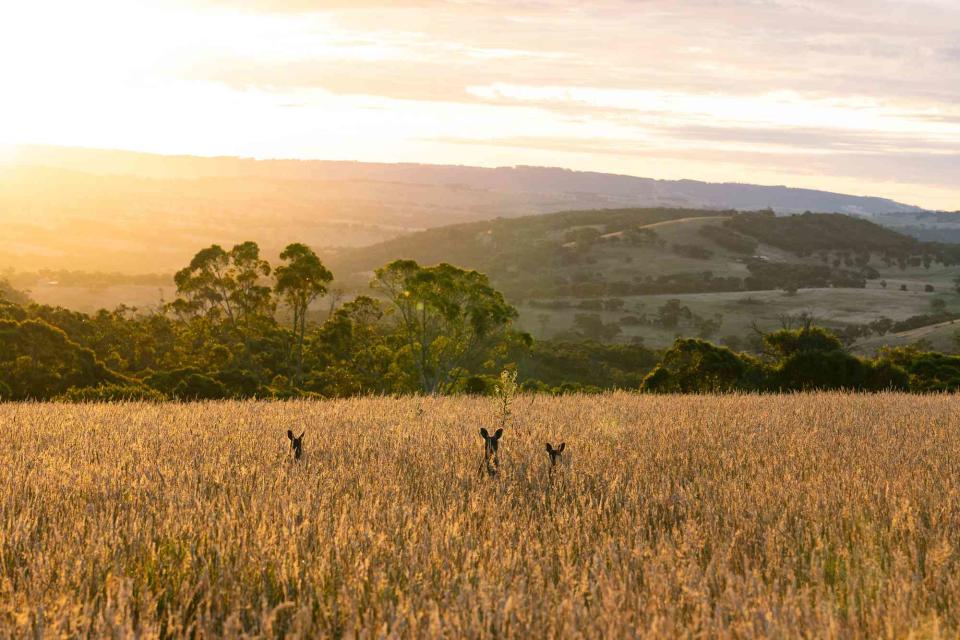
Sia Duff
Kangaroos near Esca, a retreat in South Australia's Inman Valley.In 1903, the American conservationist John Muir — legendary nature writer, founder of the Sierra Club, lover of sequoias, camping buddy of Teddy Roosevelt — set off on a botanical world tour or, as he called it, a “tree hunt.” Then, as today, Australia was a dream destination for nature lovers. Muir’s steamer paused at Adelaide, the capital of the state of South Australia, for only one day. But with his usual prodigious energy, the 65-year-old Muir — who sported a long white beard and exuded an impish sense of humor — dashed to the city’s Botanic Gardens, which was bursting with otherworldly Aussie flora. Muir was in raptures. From there, he wrote of gazing up at the thickly wooded Adelaide Hills to the city’s east. “Wish I could have spent a week in them,” he wrote wistfully.
Had he done so, Muir would have been astonished to discover three Californian sequoias growing on a regal private estate. The saplings had been planted a half-century earlier by an obsessive tree lover, Arthur Hardy, as part of an informal botanical exchange between the United States and Australia. In 2021, some 120 years after Muir’s visit, a luxurious guesthouse opened next to the Hardys’ mansion in the hills and was named Sequoia Lodge in honor of the Californian trio on its grounds.
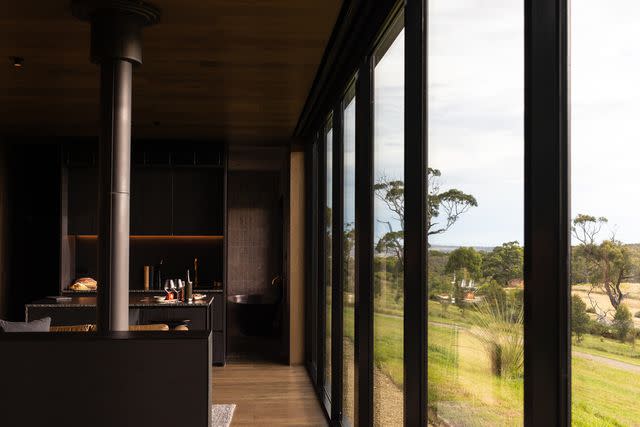
Sia Duff
The modern amenities at Esca.As an Australian expat living in New York, I became fascinated by this eccentric tale. I wanted to make the trip that Muir couldn’t and spend as much time as possible in the hills and wild countryside he’d glimpsed back in 1903. But rather than abide by Muir’s notorious austerity (he was famous for his spartan diet), I would revel in the region’s famed dining scene, mapping out a road trip that would combine gastronomy and even a little art with an outdoor regimen of bushwalking and roo-watching.
Following Muir’s tree-hunting instincts, I arrived in Adelaide and made a beeline for the Botanic Gardens. Its verdant groves and sculpted lawns patrolled by long-legged native ibises have barely changed since Muir’s visit, although a century-plus of robust tree growth has obscured any views of the hills. In the leafy heart of the gardens, I was delighted to spot one of Australia’s quirkiest relics: the Santos Museum of Economic Botany, housed in an edifice that resembles a Grecian temple. When the museum opened in 1881, it showed newly arrived immigrants which crops would grow in the Aussie soil and, thus, how to turn a profit. Displayed in antique glass cases are dozens of eerily beautiful papier-mâché models of fruit and fungi made by a German artist group, Heinrich Arnoldi & Co.
Related: What My Family Learned on a Literary Road Trip Through New England

Sia Duff
From left: Muir's book, part of the State Library collection; the 75-foot-tall tree at the Sequoia Lodge.“It’s so calming here,” whispered my guide at the museum. Few know about the quirky institution, she added, but those who stumble across it are bewitched.
A dreamlike aura lingered as I strolled toward the city center along North Terrace, feeling as if I’d been caught in a scene from the cult Peter Weir movie “Picnic at Hanging Rock.” “This is our equivalent of Museum Mile in Manhattan,” said my guide at the South Australian Museum, which I visited next. Its regal galleries showcase raw opals and the world’s largest collection of Aboriginal artifacts, including shields, totems, spears, and boomerangs — one of which is more othan 7,000 years old. Looming next door was the equally majestic State Library of South Australia, where scholars were hunched over desks like medieval scribes. A creaking staircase led to a silent, light-filled chamber where faded survey maps were spread on mahogany tables. Delicate engravings of Aussie flora hung alongside a marble sculpture of John McDouall Stuart, a Boy’s Own–style explorer who set off from Adelaide into the outback.
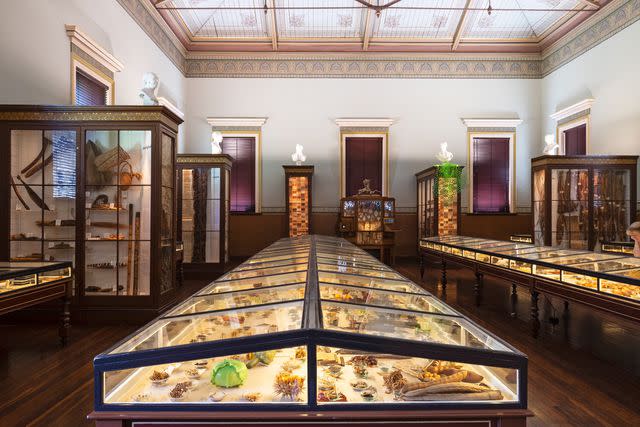
Sia Duff
A gallery of native plants at the Santos Museum of Economic Botany.Had John Muir visited this lovely time capsule? A wizened librarian looked puzzled. “Never heard of him,” he said before looking Muir up in the catalogue. “Oh, yes, we’ve got one of his books!” He produced an 1894 volume, Muir’s “The Mountains of California.” I photographed the book’s opening pages on my iPhone and read them that evening. Over a dinner of crayfish (as they call lobster locally) at Arkhé, an open-flame restaurant in Adelaide, I took in Muir’s delirious descriptions of the Sierra Nevada and sequoias, which he called “the king of conifers.”
Related: 8 Incredible Hotels Where Famous Authors Have Lived and Worked
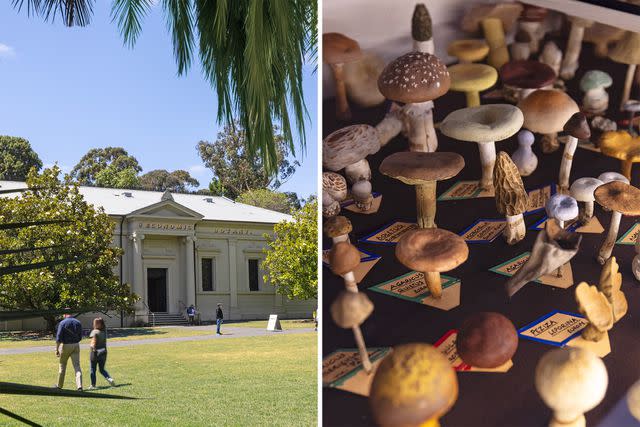
Sia Duff
From left: The Santos Museum of Economic Botany, which is set in a park; a mushroom display at the museum.The next morning, I set off on my tree-hunt road trip. A few miles into my drive, the cityscape gave way to a winding mountain road crowded on both sides by the gorgeous bush (or wild forests, in Aussie parlance) of the Adelaide Hills. Roughly the size of New York City, the hills are a mixture of raw national parkland, manicured farms, and vineyards, many cultivated in the 1800s by German winemakers who had escaped religious persecution in Europe. The thriving wineries of modern-day Australia would no doubt astonish those Lutheran pioneers, not to mention the self-denying John Muir — although they surely would be fascinated by how botany has been modernized and commercialized.

Sia Duff
A koala at Sequoia Lodge.That trend was evident at my first stop: Jurlique, the plant-based-skin-care brand that grows its own ingredients on a 154-acre organic farm. The manager, Cherie Hutchinson, led me through fields of violet, licorice, chamomile, and other Mediterranean transplants. “Hot summers and wet winters are perfect for plants,” she said of the local climate. Still, rural Australia poses its challenges. She tut-tutted at a mangled rose bed, muttering, “Some roos have been nibbling these!”
That afternoon, I reached Sequoia Lodge, a resort that revealed itself as a row of 14 modern glass-and-wood suites on the edge of a sandstone bluff. Rising near my door was one of the three sequoias planted by Arthur Hardy in 1852. A mere 170 years old, the 75-foot-tall tree is an infant compared with the oldest of its American brethren, some of which started growing long before the Parthenon was built in Athens. The other two were growing a few yards away in the private garden of Mount Lofty House, the Hardys’ majestic mansion (and now a separate boutique hotel).
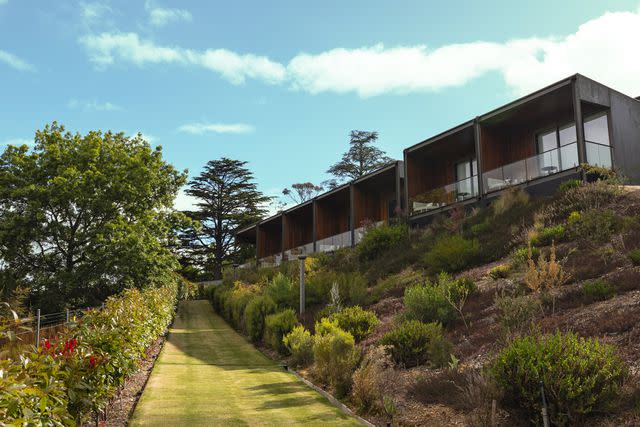
Sia Duff
The sleek suites at Sequoia Lodge.A passion for trees would have been all that Hardy would have shared with the frugal Muir. Hardy was sort of an antipodean Jay Gatsby, a lawyer, politician, and party animal. He and his wife, Martha, lived in what she described as “a kind of feudal splendor,” hosting decadent dinners and soirées for well-to-do farmers and Adelaide worthies. Today that tradition of festive gastronomy is kept alive at Hardy’s Verandah Restaurant, which has terrific valley views.
There are several hiking trails that start near the lodge, so the next morning I set off with a hotel guide, Elisa Rigato. A few steps along the Heysen Trail, we spotted a plump koala sleeping in a tree, along with two species of rosella, a parrot-like bird. About an hour later, we arrived at Cleland Wildlife Park, which has a rescue center for injured marsupials, where we saw a dozen more koalas drowsing in gum trees behind a fence. “They have all the eucalyptus leaves they can eat, and they get sprayed by misting machines if it gets too hot,” Rigato said. “It’s luxury.”
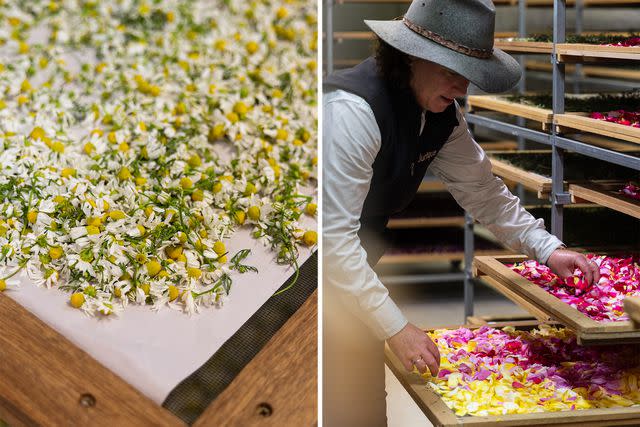
Sia Duff
From left: Chamomile flowers being dried at Jurlique; Cherie Hutchinson, a farm manager at Jurlique, inspecting the flowers.On our walk back, she explained that the trail, which runs 750 miles from the coast to the outback, was named after Hans Heysen, a mid-20th-century landscape painter who lived in the hills. Digging a little deeper, I found that Heysen had migrated from Germany as a child and became famous for his romantic watercolors of blue gum trees and sheep set against majestic empty skies. When Muir visited Australia in 1903, Heysen would have just returned from art school in Paris, but had the pair ever met, I thought to myself, they would surely have regarded each other as soulmates.
Intrigued, the following day I toured Heysen’s estate, the Cedars, outside Hahndorf, a town that wears its German heritage proudly. “Hans was a conservationist before it was popular in Australia,” said a volunteer guide, Jo Kerestes, as we wandered the serene home and gardens. Heysen lived there with his wife and their eight children, like the von Trapp family. They were great entertainers, luring Hollywood stars and European aristocrats. “Laurence Olivier and Vivien Leigh performed Shakespeare here. Anna Pavlova danced,” Kerestes said proudly as she showed me a modest stage in the living room.

Sia Duff
From left: A chocolate dessert at Hardy's Verandah Restaurant, next to Sequoia Lodge; a kookaburra at Sequoia Lodge.The farther south I drove, the wilder South Australia became. For my last night, I headed about an hour to the spectacular Fleurieu Peninsula, which protrudes from the continent’s underbelly toward the Great Australian Bight, the large oceanic bay off the southern coast. Taking my dream of wilderness to the extreme, I had signed up to stay in one of the remote modern cabins at the low-impact, eco-friendly Esca, in the Inman Valley.
As the last rays of golden sunlight faded, I turned onto an unpaved track flanked by shadowy bush. There wasn’t another car on the road. Cell phone reception faded, and the radio crackled. A few kangaroos stared at me from the side of the road and bounded away.
After rounding a bend, however, I was astonished to see an enormous bonfire on a hilltop. When I paused to take a photo of the blaze, two silhouetted figures waved at me to join. They were Esca’s owners, Mark Kirk and Claire Mills, who were burning branches cleared from their land. Nearby they had set up a sunset picnic with local Roquefort and Camembert and sparkling wine from Mosquito Hill. Solitude, I decided, was overrated. Far more satisfying was this open-air aperitif with new friends, watching the sky turn lurid shades of pink and orange.
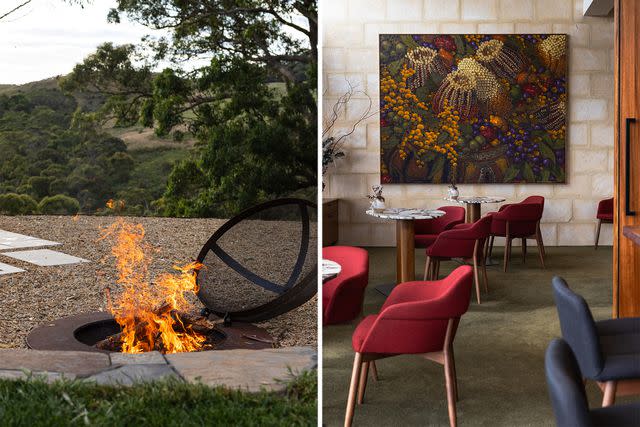
Sia Duff
From left: A firepit at Esca; Sequoia Lodge's restaurant.The next morning, Mills offered to take me hiking along the coastal section of the Heysen Trail. The path snaked along Waitpinga Cliffs, through a tangle of salt-toughened scrub, gnarled branches, and spiky plants that might have been plucked from an episode of the sci-fi series Lost in Space. Hovering in the distance were the tiny islands Iles Bourdet and the Pages, which hard-bitten Yankee whalers sailed by in the 19th century. There wasn’t a cloud in the sky, but a chilly gale blasted up from the Southern Ocean. This was the last stop before Antarctica, and it felt like it.
At last, the trail descended to Kings Beach, where bulbous heads of seaweed bobbed between enormous boulders in the water — like Neptune’s bathtub. I was longing for a swim, but the air was icy and the water near freezing. I had to ask myself: What would John Muir have done? There was no other choice but to strip off my shirt and shoes and throw myself into the waves. I lasted about five seconds, but I’ve seldom felt so alive.
A version of this story first appeared in the July 2024 issue of Travel + Leisure under the headline "Nature Hop."
For more Travel & Leisure news, make sure to sign up for our newsletter!
Read the original article on Travel & Leisure.


